You can use garden soil for outdoor potted plants, but it’s not ideal without modifications. Garden soil often lacks the drainage, aeration, and nutrient balance needed for pots, leading to issues like compaction, poor root growth, and pest problems. For best results, use a potting mix or amend garden soil with materials like perlite or compost to improve its suitability.
If you’re gardening on a budget or have an abundance of garden soil, you might wonder, “Can I use garden soil for outdoor potted plants?” It’s a common question, especially for beginners looking to save money. While garden soil is great for in-ground planting, using it in outdoor containers requires careful consideration.
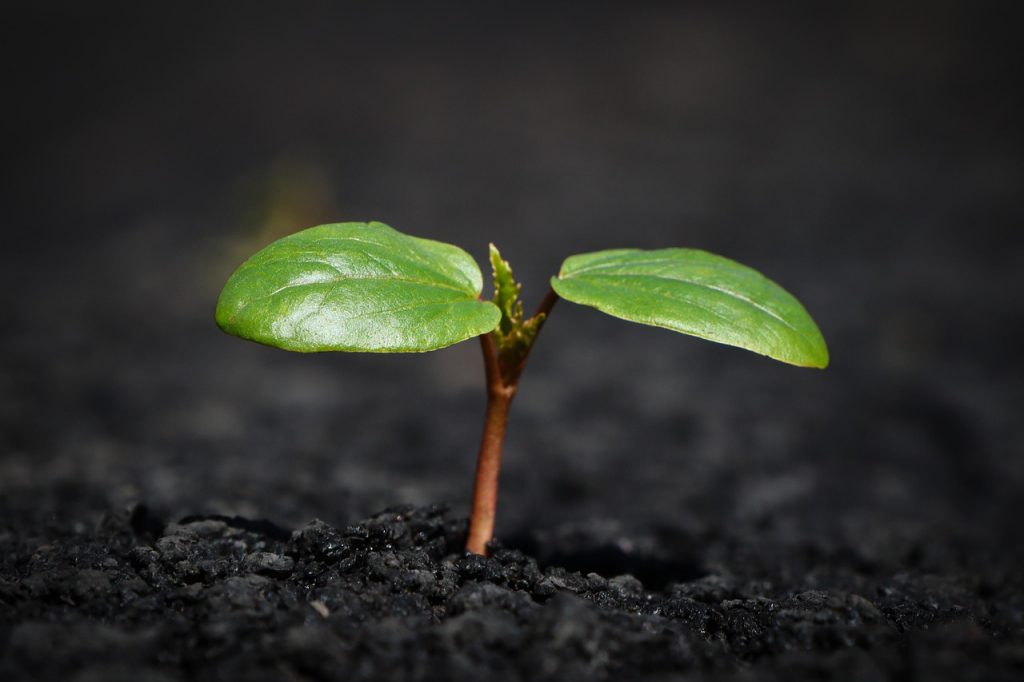
What Is Garden Soil?
Garden soil is the natural soil found in your yard or garden, typically a mix of sand, silt, clay, and organic matter. Its composition varies widely depending on your location, climate, and soil history. For example, some garden soils are sandy and well-draining, while others are heavy with clay and retain water. Garden soil is designed by nature for in-ground planting, where roots can spread freely, and water can percolate through the earth.
What Is Potting Mix?
Potting mix (often called potting soil) is a specially formulated blend for container gardening. Unlike garden soil, it’s typically soilless, made from ingredients like peat moss, coconut coir, perlite, vermiculite, compost, and bark. These components ensure excellent drainage, aeration, and nutrient availability, which are critical for plants confined to pots. Potting mixes are lightweight, sterile, and tailored to specific plant types (e.g., cacti or orchids).
Key Differences Between Garden Soil and Potting Mix
Understanding the differences between garden soil and potting mix is crucial to deciding whether garden soil is suitable for outdoor potted plants. Here’s a breakdown:
| Factor | Garden Soil | Potting Mix |
|---|---|---|
| Composition | Sand, silt, clay, organic matter | Peat moss, perlite, vermiculite, compost |
| Drainage | Varies, often poor in containers | Excellent, designed for container drainage |
| Aeration | Prone to compaction in pots | Lightweight and airy for root health |
| Sterility | Contains pests, weeds, pathogens | Sterile, free of pests and weed seeds |
| Nutrient Content | Variable, may need frequent fertilization | Balanced nutrients for initial growth |
| Weight | Heavy, leading to soil settling | Lightweight, ideal for pots |
| Cost | Free or low-cost from your yard | More expensive, $5–$20 per bag |
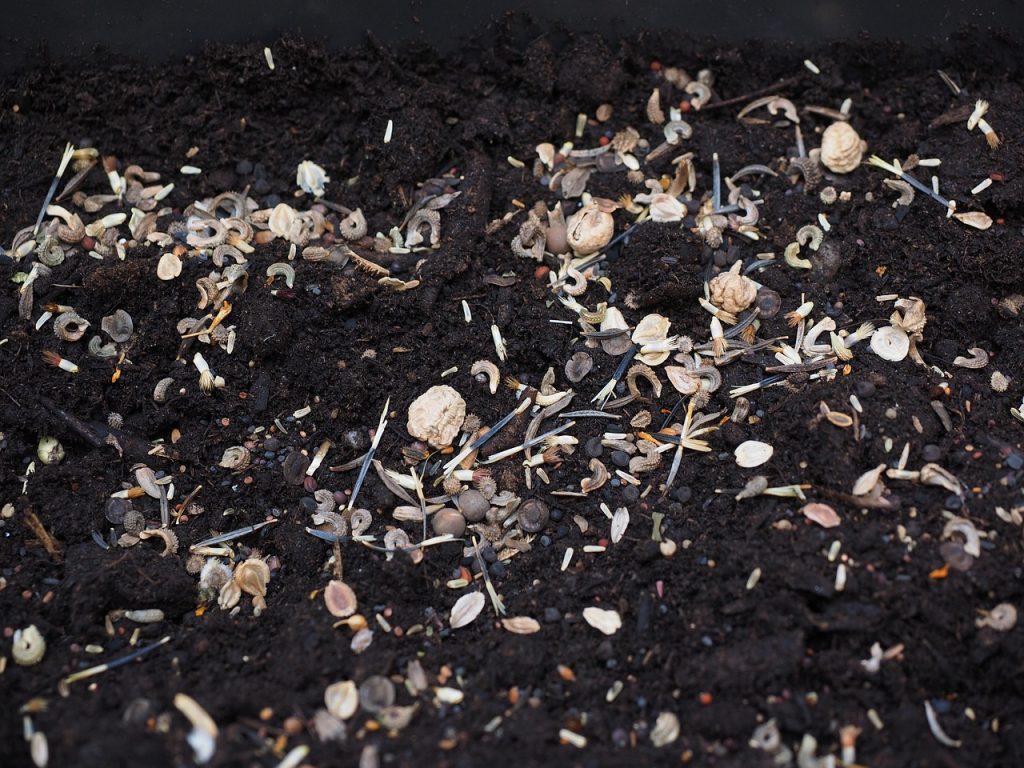
Why Garden Soil May Not Be Suitable for Outdoor Potted Plants
While garden soil is readily available, it’s not optimized for the unique conditions of container gardening. Here are the main reasons it may cause problems for outdoor potted plants:
1. Poor Drainage
- Issue: Garden soil often retains too much water in pots, leading to soggy roots. Unlike in-ground gardens, where excess water can drain into surrounding soil, pots have limited drainage through bottom holes.
- Impact: Overly wet soil can cause root rot, especially for plants like lavender or succulents that prefer well-draining conditions. Clay-heavy garden soil is particularly problematic, as it holds water and restricts drainage.
- Example: If you plant marigolds in a pot with clay-rich garden soil, the soil may stay waterlogged, stunting growth or killing the plant.
2. Compaction
- Issue: Garden soil compacts over time in containers due to frequent watering and lack of natural soil loosening (e.g., from worms or weather). Compacted soil reduces air pockets, suffocating roots.
- Impact: Roots struggle to grow, absorb nutrients, or access oxygen, leading to weak or dying plants. This is especially true for heavy soils with high clay content.
- Example: A tomato plant in compacted garden soil may show stunted growth or yellowing leaves due to poor root aeration.
3. Pests and Pathogens
- Issue: Garden soil often contains weed seeds, insect eggs, or fungal pathogens (e.g., Fusarium or Verticillium wilt). In the confined space of a pot, these can proliferate without natural checks like beneficial soil microbes.
- Impact: Weeds compete with your plants, while pests like root aphids or pathogens can damage or kill them. Potting mixes are sterile to avoid these risks.
- Example: Using garden soil for potted zinnias might introduce weed seeds, leading to unwanted plants crowding the pot.
4. Inconsistent Nutrient Content
- Issue: Garden soil’s nutrient levels vary widely and may be depleted, especially if sourced from a heavily used garden bed. Pots limit plants’ access to external nutrients, unlike in-ground beds.
- Impact: Plants may suffer nutrient deficiencies, requiring frequent fertilization, which can be costly and time-consuming.
- Example: Petunias in nutrient-poor garden soil may produce fewer blooms without regular fertilizer applications.
5. Weight Issues
- Issue: Garden soil is heavier than potting mix, making pots difficult to move and increasing the risk of soil settling over time.
- Impact: Heavy pots are impractical for patios or balconies, and settling soil can expose roots or reduce water retention.
- Example: A large pot filled with garden soil for a dwarf citrus tree may become too heavy to reposition, complicating care.
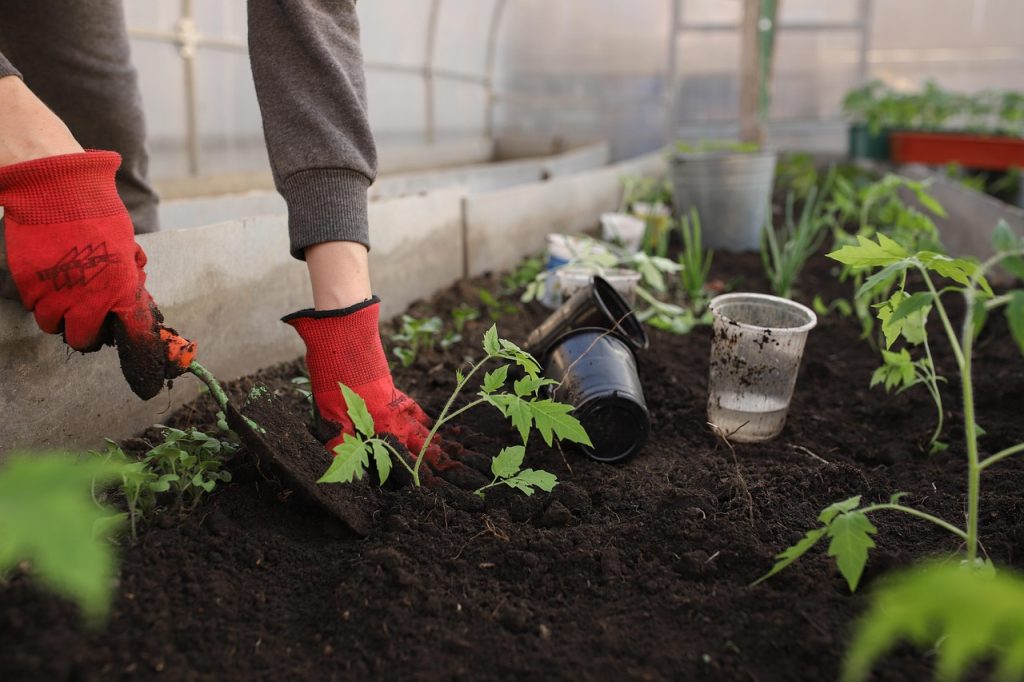
When Can Garden Soil Work for Outdoor Potted Plants?
Despite these challenges, garden soil can be used for outdoor potted plants if properly modified to address drainage, aeration, and sterility concerns. Here’s when and how it can work:
- For Temporary or Hardy Plants: Garden soil can suffice for short-term plantings (e.g., annuals like marigolds or zinnias) or hardy plants (e.g., daylilies) that tolerate variable soil conditions.
- With Amendments: Mixing garden soil with materials like perlite, sand, or compost can improve its structure for container use.
- In Large Containers: Larger pots (15+ gallons) mimic in-ground conditions better, reducing drainage and compaction issues.
- For Budget-Conscious Gardeners: If potting mix is too expensive, amending garden soil is a cost-effective alternative.
How to Modify Garden Soil for Outdoor Potted Plants
To make garden soil suitable for outdoor containers, you’ll need to address its shortcomings. Here’s a step-by-step guide to amending garden soil:
Step 1: Test Your Soil
- Why: Understanding your garden soil’s texture (sandy, loamy, or clay-heavy) and nutrient content helps you tailor amendments.
- How: Use a home soil test kit (available at garden centers for $10–$20) to check pH and nutrient levels (nitrogen, phosphorus, potassium). Alternatively, send a sample to a local extension service for detailed analysis.
- Ideal Range: Most potted plants prefer a pH of 6.0–7.0. Adjust with lime (to raise pH) or sulfur (to lower pH) if needed.
Step 2: Sterilize the Soil
- Why: Sterilization kills weed seeds, pests, and pathogens, making garden soil safer for pots.
- How:
- Oven Method: Place moist soil in an oven-safe container, cover with foil, and bake at 180–200°F (82–93°C) for 30 minutes. Avoid higher temperatures to preserve nutrients.
- Solarization: Spread soil in a thin layer, cover with clear plastic, and leave in direct sun for 4–6 weeks during summer to kill pathogens.
- Tip: Sterilization is crucial for small pots where pests can quickly overrun confined plants.
Step 3: Improve Drainage and Aeration
- Why: Garden soil needs better drainage and aeration to mimic potting mix in containers.
- How:
- Mix 1 part garden soil with 1 part perlite or coarse sand to improve drainage.
- Add 1 part compost or coconut coir to enhance aeration and water retention without compaction.
- Example ratio: 50% garden soil, 25% perlite, 25% compost for a balanced mix.
- Tip: For plants like succulents, increase perlite or sand to 40% for extra drainage.
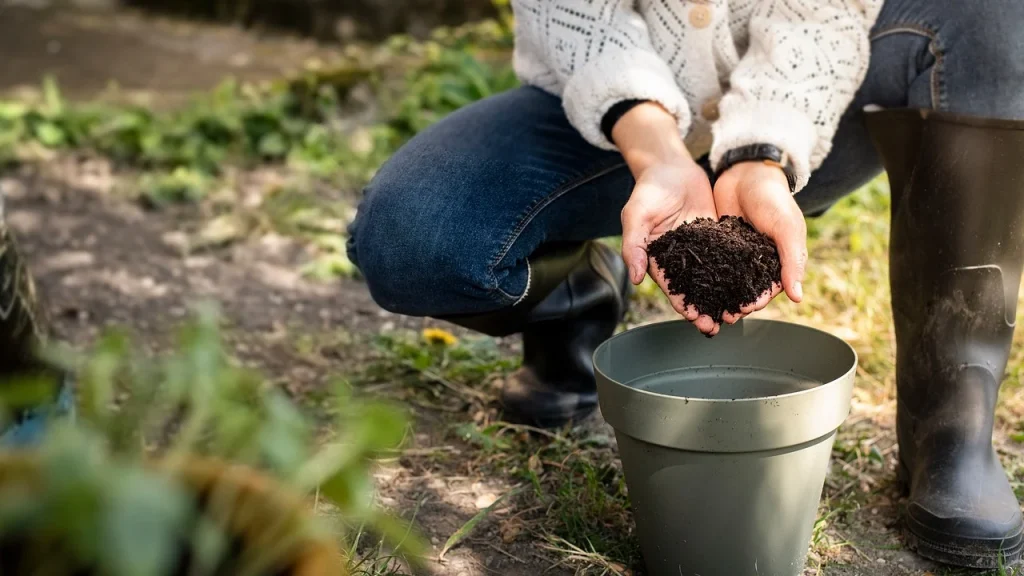
Step 4: Boost Nutrient Content
- Why: Garden soil may lack sufficient nutrients for potted plants’ confined root systems.
- How:
- Mix in a slow-release fertilizer (e.g., 10-10-10 NPK) at planting time, following package instructions (typically 1–2 tablespoons per gallon of soil).
- Add organic matter like well-rotted manure or compost (10–20% of the mix) to enrich nutrients.
- Tip: Reapply liquid fertilizer (e.g., fish emulsion) every 4–6 weeks during the growing season for continuous nutrient supply.
Step 5: Choose the Right Pot
- Why: The pot’s size and drainage holes impact how well garden soil performs.
- How:
- Use pots with multiple drainage holes to prevent waterlogging.
- Choose pots at least 12 inches deep for most plants to allow root growth and reduce compaction.
- Add a layer of gravel or broken pottery at the pot’s base to enhance drainage.
- Tip: Larger pots (15+ gallons) work better with garden soil, as they mimic in-ground conditions.
Read More: Extra Large Planter Pots Outdoor
Table: Garden Soil vs. Modified Garden Soil for Potted Plants
| Aspect | Unmodified Garden Soil | Modified Garden Soil |
|---|---|---|
| Drainage | Poor, waterlogged in pots | Improved with perlite/sand |
| Aeration | Compacts easily | Enhanced with compost/coir |
| Sterility | Contains pests/pathogens | Sterilized to remove risks |
| Nutrients | Variable, often depleted | Enriched with fertilizer/compost |
| Suitability | Risky for most potted plants | Suitable with proper amendments |
Practical Tips for Using Garden Soil in Outdoor Pots
- Start Small: Test garden soil in one or two pots to monitor plant health before committing to larger projects.
- Monitor Watering: Garden soil retains more water than potting mix, so check soil moisture with your finger before watering. Aim for moist, not soggy, soil.
- Choose Hardy Plants: Plants like marigolds, zinnias, or lavender tolerate amended garden soil better than delicate species like orchids.
- Refresh Soil Annually: Replace or re-amend soil each season to prevent nutrient depletion and compaction.
- Inspect for Pests: Regularly check plants for signs of pests or weeds, as garden soil may introduce these even after sterilization.
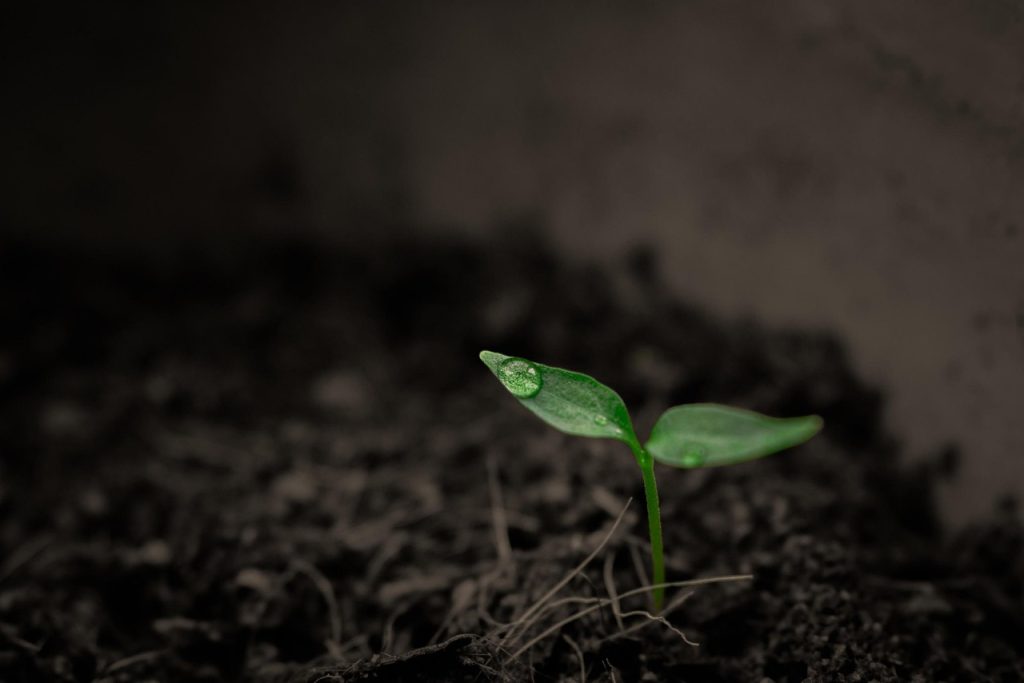
FAQ: Using Garden Soil for Outdoor Potted Plants
Yes, mixing garden soil with potting mix (e.g., 1:1 ratio) can balance cost and performance. The potting mix improves drainage and aeration, while garden soil adds bulk. Ensure the garden soil is sterilized to avoid pests.
Unamended garden soil in pots can lead to waterlogging, compaction, nutrient deficiencies, and pest or weed issues. Plants may grow poorly, develop root rot, or die due to these conditions.
Not always. Hardy annuals (e.g., marigolds, zinnias) or perennials (e.g., daylilies) may tolerate amended garden soil, but sensitive plants (e.g., succulents, herbs) do better with potting mix due to precise drainage needs.
Test your soil for texture (loamy is best), pH (6.0–7.0), and nutrients. Amend with perlite, compost, and fertilizer to improve drainage and nutrient content before using in pots.
Yes, but only if amended properly with compost, perlite, and fertilizer to ensure drainage and nutrients. Vegetables like tomatoes or peppers need well-draining, nutrient-rich soil to thrive in containers.
Conclusion
While you can use garden soil for outdoor potted plants, it’s not the best choice without modifications. Its tendency to compact, retain water, and harbor pests makes it less ideal than potting mix for container gardening. By testing, sterilizing, and amending garden soil with perlite, compost, and fertilizer, you can make it work for hardy plants like marigolds or zinnias, especially in larger pots. For optimal results, consider investing in a quality potting mix or blending it with amended garden soil to balance cost and plant health. With these tips, you’ll be ready to grow a thriving outdoor container garden!